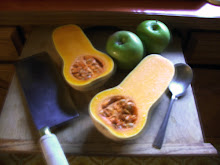 Apparently, the most cliché thing you can write about as a food blogger is caprese salad and how it reminds you of your summer. Honestly, I am not above being a cliché, and my food blog is ever so humble compared to the one who called it a faux pas. I think that as a beginner, if I ever were to become rich and famous and have a movie made about my exploits, my naïve yet nobly intended post of caprese salad adulation will become a deleted scene, if the director is kind, or simply overlooked as the wistful ramblings of a novice. Hmm... I wonder who would play me in an Abstemious Epicure movie.
Apparently, the most cliché thing you can write about as a food blogger is caprese salad and how it reminds you of your summer. Honestly, I am not above being a cliché, and my food blog is ever so humble compared to the one who called it a faux pas. I think that as a beginner, if I ever were to become rich and famous and have a movie made about my exploits, my naïve yet nobly intended post of caprese salad adulation will become a deleted scene, if the director is kind, or simply overlooked as the wistful ramblings of a novice. Hmm... I wonder who would play me in an Abstemious Epicure movie.Many summers have come and gone for me without friendships to help pass the long months between obligations. Some summers have been filled with obligations themselves. But every few years, I'm lucky enough to have a June-July-August that revolves around friends and food. Those summers are the ones that stick in your memory, and this summer was like that.
I can't remember what the reason for the gathering was, but it resulted in the lot of us out in my friend Jonathan's massive garden at twilight, picking whatever we could get our hands on and shoving it into our greedy mouths. As we tried to decide what sort of "real" food we could make from what grew in Jonathan's backyard, one of us suggested caprese salad. You may have eaten caprese salad before, but if you have never eaten it made from homegrown tomatoes and basil and fresh whole milk mozzarella, you will never understand how magical it is. Each bite is an explosion of perfectly-matched flavors. I didn't do much... sliced cheese, halved cherry tomatoes, tore basil and arranged them prettily. Jonathan's garden really did all the work. There's just something about homegrown tomatoes that grocery store tomatoes can never touch. They taste like an accumulation of sunlight.
Within seconds, the plate was destroyed. All that remained was tomato carnage, scattered basil flowers, and blissful, contented expressions on the faces of my friends. When I look back on my summer and remember it fondly, I will remember this salad. I hope those multitudes of other food bloggers who write about "Summer on a Plate" have memories as happy as mine. Can you really fault 'em for immortalizing them?






























